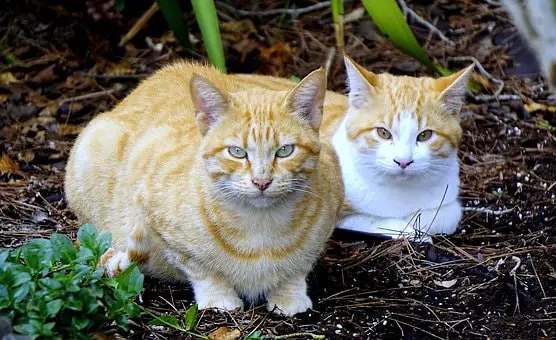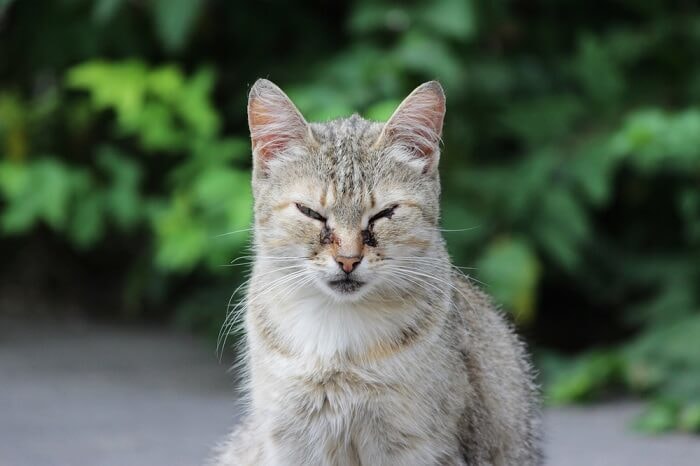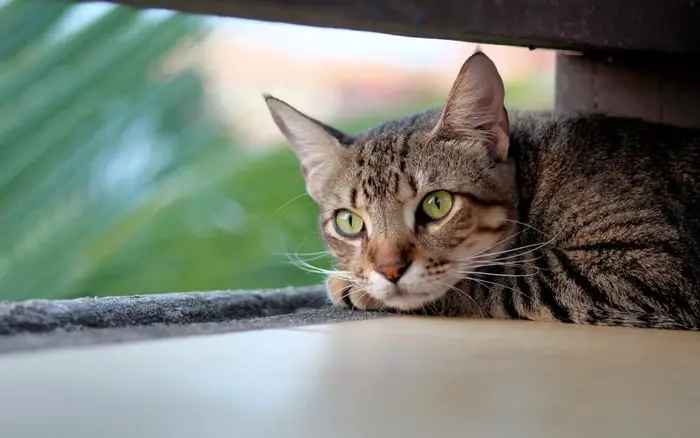Feline viral rhinotracheitis or feline herpesvirus (FHV) or feline herpesvirus-1 (FHV-!) causes acute respiratory illness of cats, characterized by respiratory symptoms sneezing, nasal discharge, rhinitis, fever, and conjunctivitis. The disease is referred to as an upper respiratory infection because it affects the area involved with breathing before the lungs and trachea. It also affects the reproductive organs and can cause complications during pregnancy.
Important Information on Feline Viral Rhinotracheitis
As suggested by the name, feline viral rhinotracheitis affects the nose, eyes, throat area, and sinus areas. It is a part of the upper respiratory infection complex in cats, a group of viral and bacterial infections. Cats often have several respiratory infections simultaneously, and FHV-1 is one of the most common.

Causes of Feline Viral Rhinotracheitis
The common causes of feline viral rhinotracheitis are:
- Feline viral rhinotracheitis is a herpesvirus, specially Herpesvirus 1, and it is specific for cats.
- It is a respiratory disease of cats caused by Feline herpesvirus 1, of the family Herpesviridae
Epidemiology and Risk Factors of Feline Herpesvirus Infection
The disease occurs worldwide. Cats and kittens of all ages and breeds are susceptible, but the most common risk factors include:
- Kittens, especially those born to infected mothers.
- Multi-cat households, catteries, and pet adoption shelters.
- Cats may be stressed by conditions such as physical conditions, poor nutrition, poor sanitation, and poor ventilation.
- Pregnant and lactating cats.
- Sick cats.
- Unvaccinated cats against FHV-1.
- Other infectious and contagious diseases can make the cat more susceptible to feline herpesvirus-1.
- Recovered cats from Rhinotracheitis are carriers of the virus.
Feline Viral Rhinotracheitis Transmission and Spread
FHV-1 is shed through the droppings from an infected cat’s eyes, nose, and mouth. The virus comes into the body in three ways:
- By ingestion.
- By inhalation via the nose.
- By contact with the eyes.
The disease can be spread by both direct and indirect contact with the infected cat’s mouth, nose, or eye discharge. Sneezing and coughing can disseminate the virus as far as 4 feet.
The indirect transmission with contaminated objects that an infected cat has touched or sneezed on inducing food and water bowls, cages, litter trays, pet owner’s clothing, and the pet owner’s hands. Many cats infected with feline viral rhinotracheitis never completely eliminate the virus; the cats are known as latent carriers. They harbor the virus in thor nerve cells.

Pathogenesis and Clinical Symptoms of FHV-1
The FHV infects and grows in the nose, eyes, sinuses, the membranes around the throat, eyes, tonsils, trachea, and upper palate of the mouth. After 1 to 3 days of infection, there are signs of severe sneezing. Common symptoms include:
- Coughing.
- Fever.
- Loss of appetite.
- Weight loss.
- Runny nose.
- Sneezing attacks and watery eyes.
- Anorexia results from an inability to smell, loss of appetite, fever, and general malaise.
- Most cats infected with FHV-1 have watery eyes to conjunctivitis and ulcerative keratitis.
- Infection during pregnancy-though rhinotracheitis primarily affects the upper respiratory tract; it can also cause complications during pregnancy, including- bacterial pneumonia in young kittens, sickly newborn kittens, and spontaneous abortion.
Diagnosis of Feline Viral Rhinotracheitis
The diagnostic procedures are as follows:
- History and clinical signs, and laboratory tests detect the virus in the cat’s nasal or eye secretions.
- An immunofluorescent test is useful for secretions from the nose or conjunctiva.
- The virus can be isolated with pharyngeal swab samples. Cotton or gauze is used to collect respiratory tract secretions from the pharynx.
- Smears from the conjunctiva can be used to detect the structure inside the nucleus of a viral-infected cell.

Treatment of Feline Viral Rhinotracheitis
Treatment for an FHV-1 infected cat involves providing supportive care, including the following:
- Minimize the stress, and you make sure the room is warm, well ventilated, and well lighted.
- You must ensure drinking and eating your cat.
- Clean the nose and eyes and keep the airways clear from discharges.
- Keep your cat in a bathroom with a hot shower or use a humidifier. The humidifier helps break up the mucus in the upper airway.
- Anorexic cats should be provided with adequate nutrients, and fluid is essential for the cat’s health.
Medication for FHV-1
The common medication depending on the clinical signs and symptoms are:
- Oral antibiotics to prevent or treat secondary bacterial infections.
- Eye ointments to treat ulcerative uveitis.
- You can use nasal drops (decongestants) to decrease nasal discharge.
Management and Prevention of Feline Herpesvirus
Preventive management procedures are as follows:
- Routine vaccination against Feline viral rhinotracheitis can prevent the development of severe disease, but it does not always prevent infection
- The kitten should be vaccinated at 8 to 10 weeks of age, then revaccination at eeks of age, and repeat the dose annually.
- You must isolate the infected cats to reduce the spread of the disease to healthy cats.